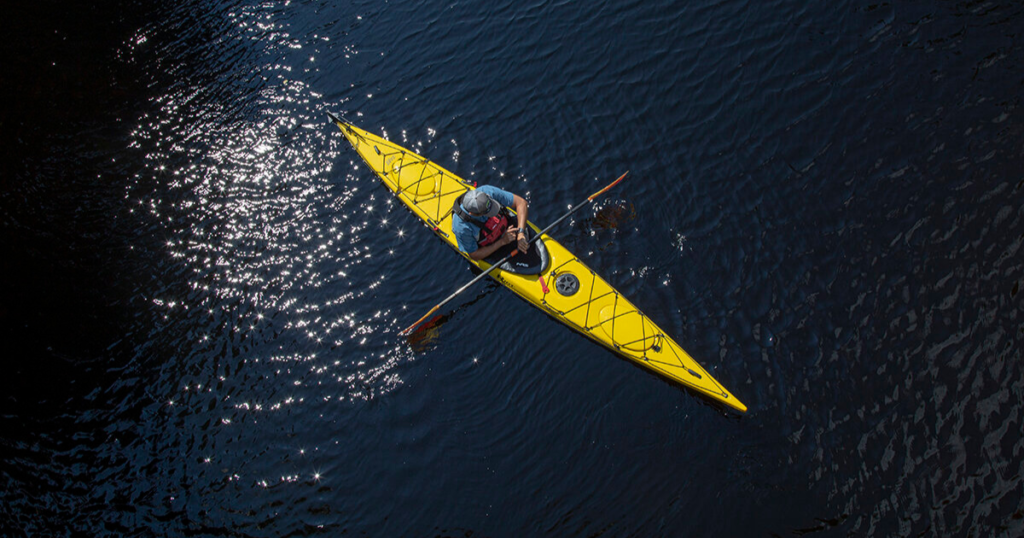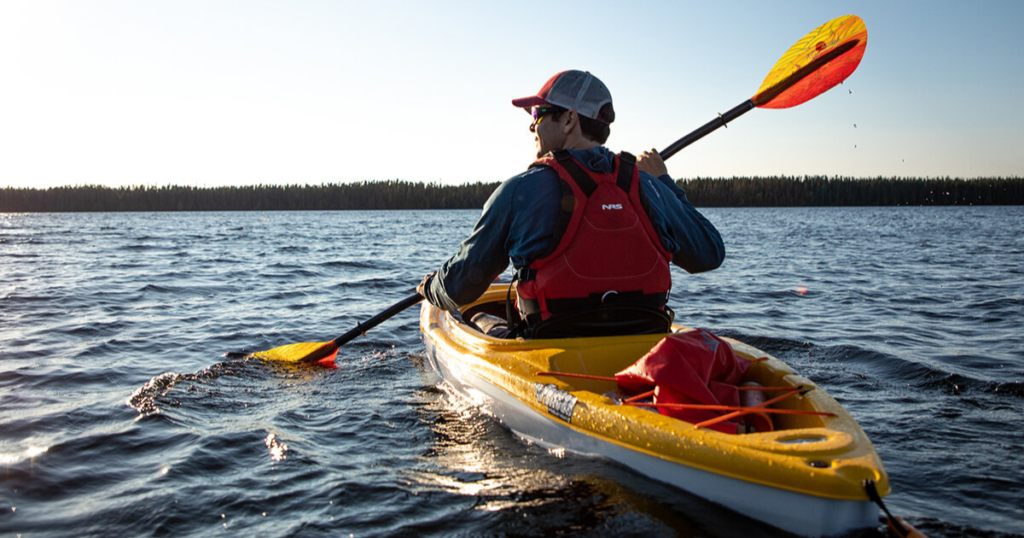What’s the Difference?
While they're often used interchangeably, they are different paddlecrafts and they require different skills to use – so let's dive into the pros and cons of each.
Sea Kayaks

A sea kayak is typically between 15 – 18-feet in length. They’re long, narrow and fast, which allows you to cover greater distances, as well as handle rough conditions. On that note, they’re also designed with small cockpits so you can use a skirt, which keeps water out of your boat and prevents you from swamping.
Pros
- You can paddle in rougher conditions
- You have the ability to do on multi-day trips thanks to hatches and deck bungees
- Bulkheads help prevent your kayak from capsizing and filling with water in the event you swim
- A lot of sea kayaks come equipped with rudders or skegs
- Sea kayaks come in an array of high-performance materials, making them lighter/ easier to carry
Cons
- Require experience to paddle, as they are narrower and therefore less stable
- Harder to get back into if you don’t know how to roll or self-rescue
- Tend to be more expensive than a plastic rec kayak
Rec Kayaks

Recreational or ‘rec’ kayaks are usually between 9 – 15-feet in length, and tend to be shorter and wider, which makes them more stable. They’re not designed to cover the same distance as a sea kayak or as efficiently.
Pros
- More user-friendly to paddle a recreational kayak, as they tend to be more stable.
- Available in sit-on-top (SOT) and sit-inside (SINK) styles.
- SOT are great for kids or inexperienced paddlers, as you can get back on easily.
- The cockpits for a SINK tend to be a lot larger than a sea kayak, so you don’t feel constricted.
- Rec kayaks tend to be very comfortable, with some models even having adjustable seats.
Cons
- Not designed for rough water, which means you’ll need to stay closer to shore
- Won’t cover as much distance as a sea kayak (at least not easily)
- Tend to be made of plastic, which is quite heavy for loading onto your car and carrying to the water
Check Out Paddle Tales
Paddle Tales follows World Champion kayaker, Ken Whiting, around North America as he explores the continent by sea kayak, whitewater kayak, canoe, and stand up paddleboard, while telling the stories of the unique people and places that he encounters.
Made in Partnership With:

Special Thanks to:







